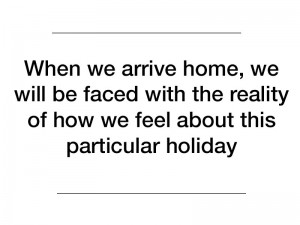After a half semester of planning, an official HOPE office has been opened in the campus center basement for student assistance. According to Hanna Kahler and Jina Libby, juniors both involved in the formation of the office, HOPE aims to both track student volunteer service and connect students with new volunteer opportunities in the area.
Greg Bish, director of student programs, maintains that the initiation of a HOPE office is a continuation of a strong tradition of service at the college. “There have been variations of the HOPE office through the years. The HOPE office as we’re currently experiencing it started just this year. If you look at service, service goes all the way back to Willard J. Houghton,” he said.

One of the current projects of the HOPE office has been the use of “Impact Cards” to quantify student involvement in the community as volunteers. Said Bish, “It’s an effort to do some data-gathering and not just anecdotally say our students do service. We do know they do service, but we’re just trying to find a way to collect information about what they’re doing.” The cards, which work in a way similar to timecards, may be filled out on a weekly basis and may include hours from multiple volunteer projects.
Initial response to Impact Cards has been slow. “[The cards have] been trickling in,” said Bish. “I wouldn’t say there’s been a huge overflow yet. We’ve not gotten hundreds back by any means, but we’re in the early stages.” Kahler added that the office has recorded about 46 ½ volunteer hours from students via Impact Cards. “To me, that is satisfactory. Not as amazing as I would want, but it’s satisfactory,” added Libby. She explained that while the recorded hours may be low, the depth of student volunteering is notably higher. “If you take the JET program alone, there are approximately 20 students going down every Saturday, and that’s six hours a Saturday, eight Saturdays. We’re talking over 700 hours,” she explained.
Impact Cards, while a measure of student volunteering for the college, also aim to be a motivator for current volunteers and those interested in volunteering. “On an individual level, we’re trying to encourage volunteer service in the community, so when people get to 25 hours, we want to … recognize that somehow,” explained Kahler.
Also part of the office’s work is connecting students with potential volunteer opportunities. Through connections with the Southern Tier Regional Volunteer Center, a database that lists opportunities between Jamestown and Binghamton, the office is able to search a pool of current needs for volunteers in the Southern Tier area and pass them on to students with specific volunteer interests.
Locally, the office has worked on establishing volunteer connections with Wellspring Ministries in Belfast, NY; Absolut Care, a nursing and rehabilitation center in Houghton, NY; and the Powerhouse Youth Center in Fillmore, NY. One of Kahler’s and Libby’s current tasks is to publicize a project over spring break which would call for student volunteers for Wellspring Ministries. Another task is to involve student-run clubs and honor societies in leading activities for youth at the Powerhouse center. Explained Bish, “We would ask different clubs and organizations to sign up … and do something related to [their] club. If it’s the French Club, they could be making crepes. If it’s Sigma Zeta, they could be doing a science experiment. Basically, [we’re] trying to get clubs and organizations, or RAs and floors, to … take one day and go volunteer at the after-school program and provide some kind of activity…”
As for long-term projects, Kahler hopes to better integrate volunteer service with classroom instruction. “We’re also doing a faculty survey to see how much service learning there is in the classrooms. It’s something recently developed, so it’s not going to be sent out for a while,” she said. Both she and Libby stressed the importance of service at Houghton. “Looking at it from a Christian perspective, it’s one of our callings, as a Christian, to serve,” said Libby.

